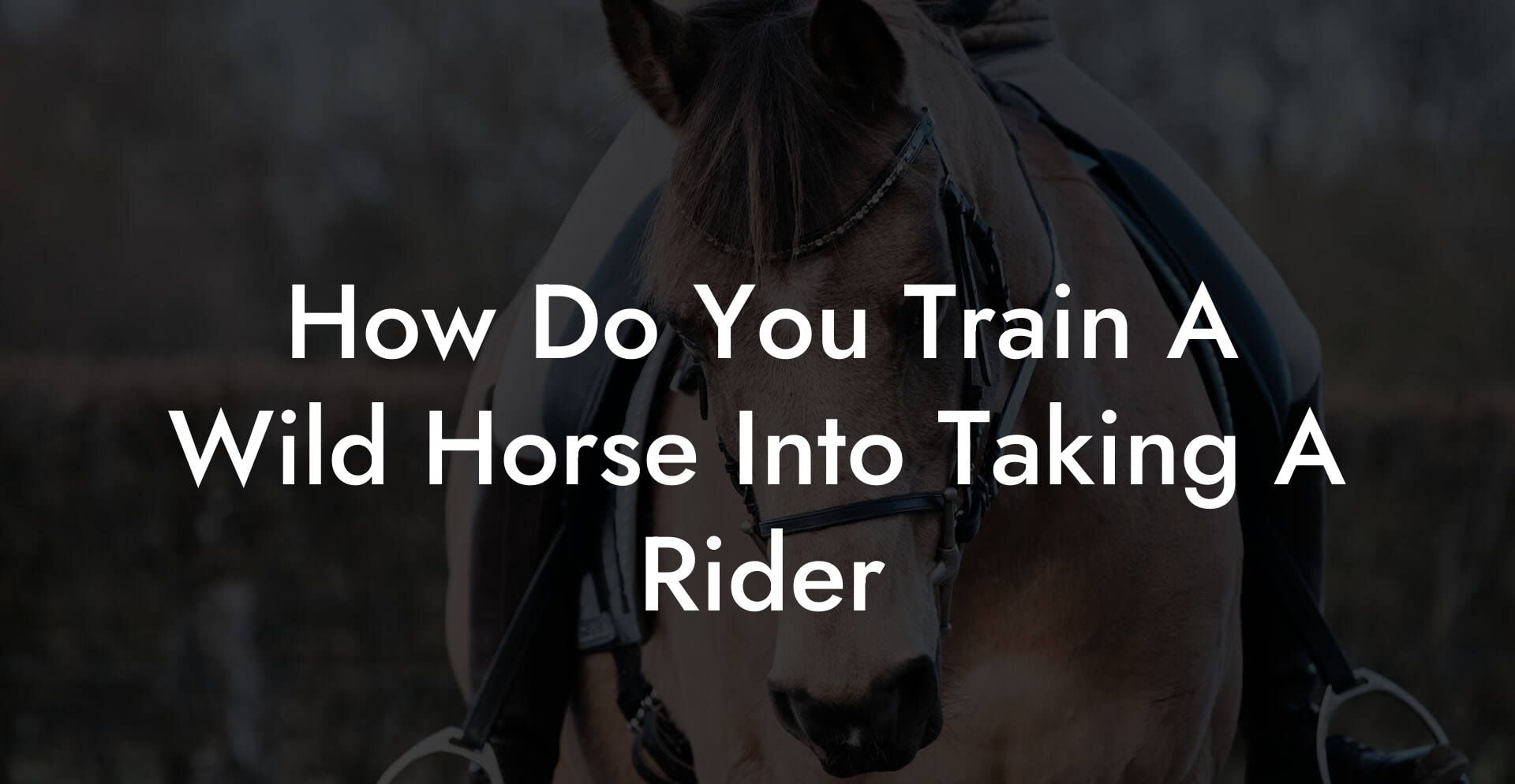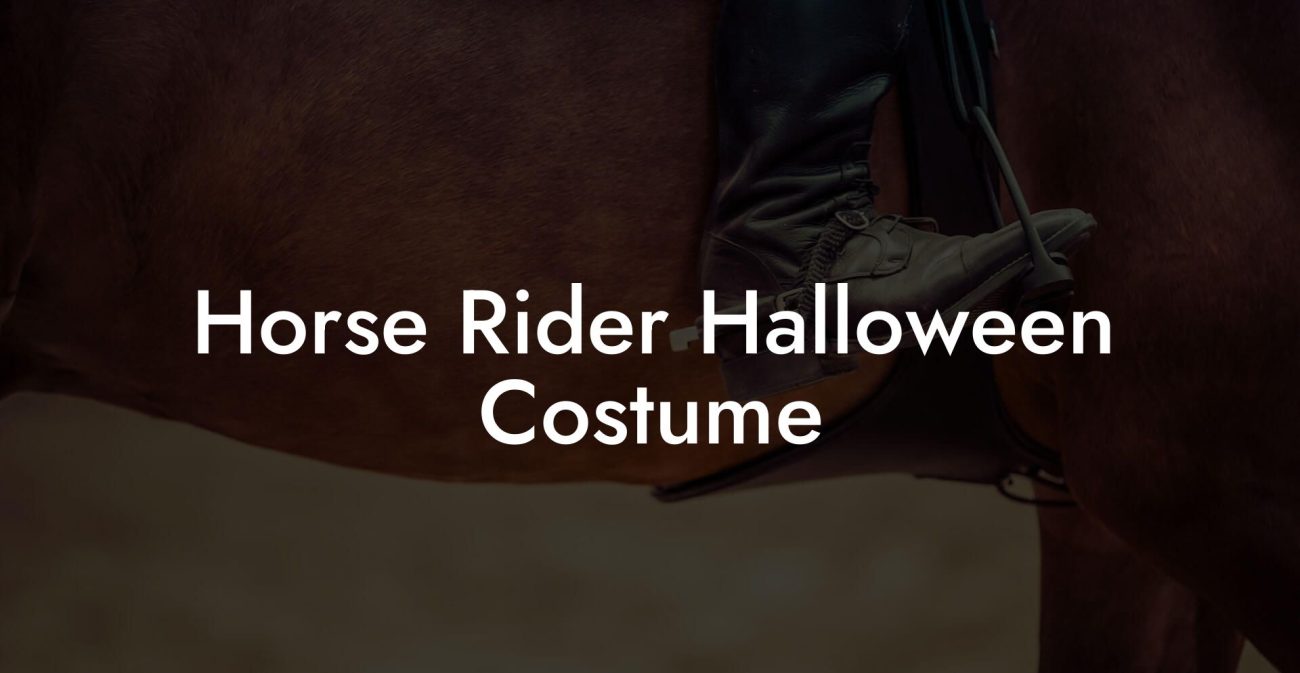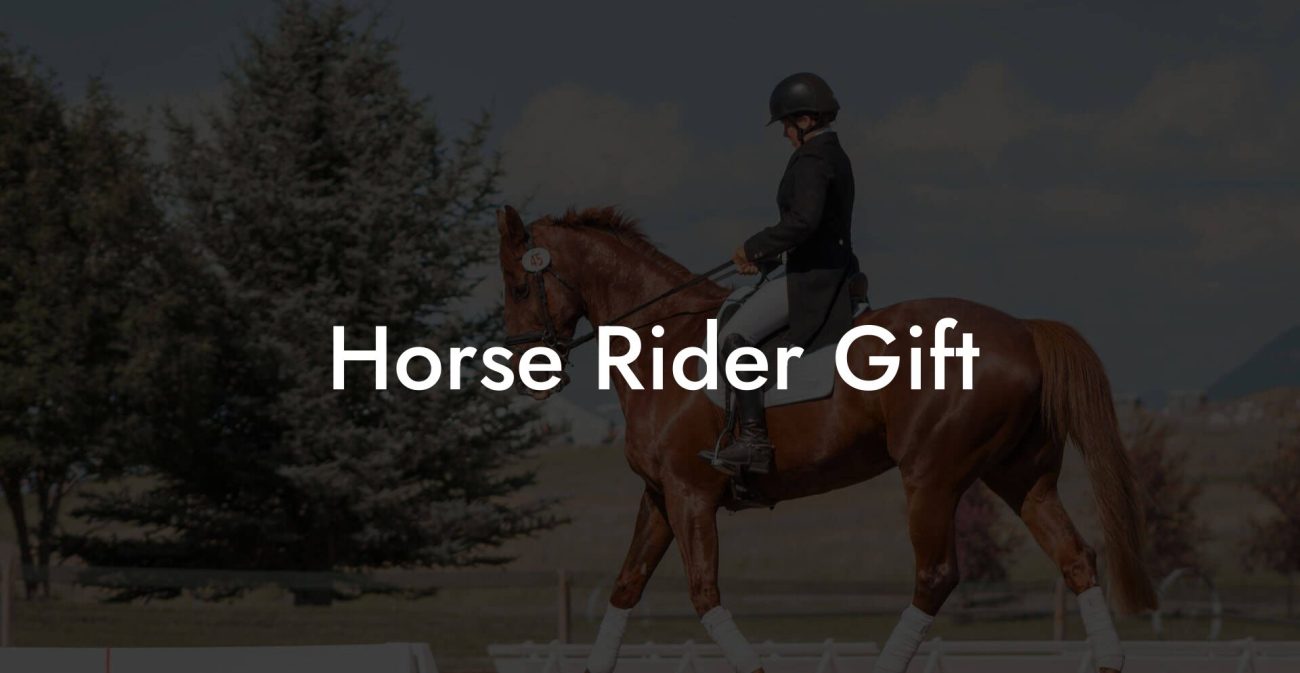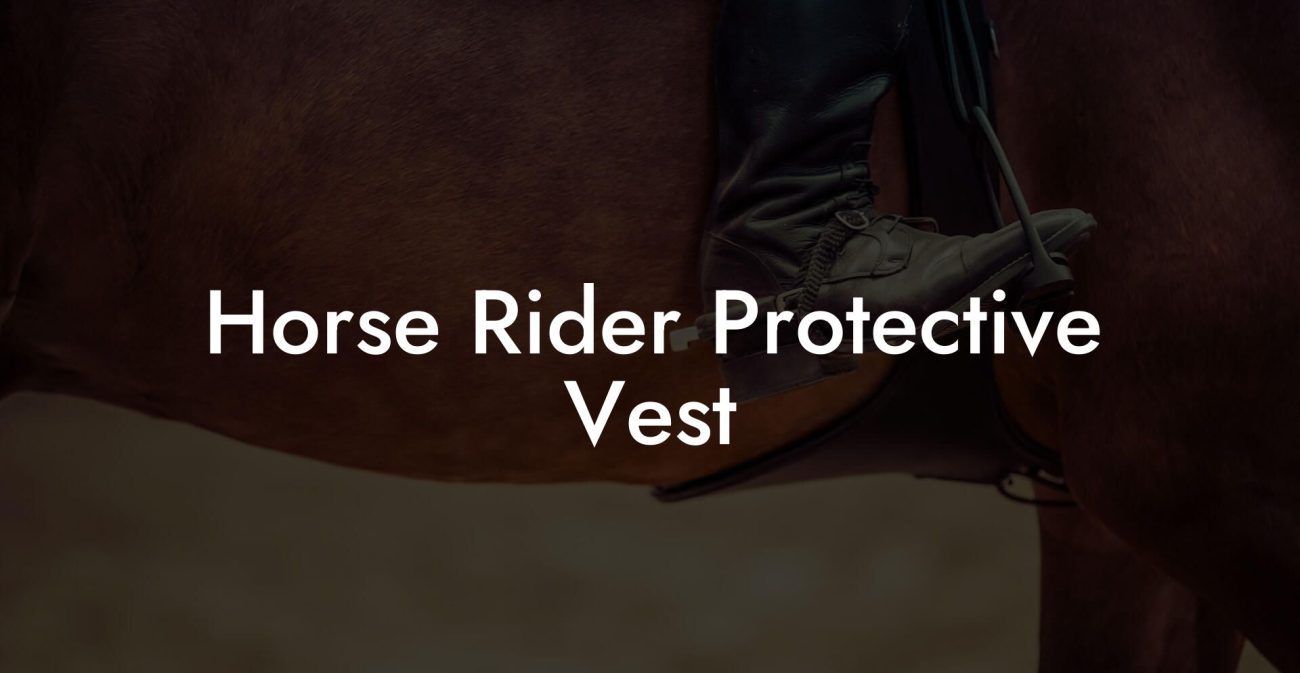Ever wondered what it takes to turn a wild, untamable horse into a majestic steed ready to carry a rider with grace, guts, and a dash of wild spirit? Strap in as we dive headfirst into the art and science behind taming a wild horse, a journey filled with trial, error, laughs, and a whole lot of heart. Whether you’re a curious millennial fascinated by animal care or a Gen-Z adventurer looking to deepen your connection with nature, this guide is your go-to resource for turning that raw, unbridled power into a partnership built on trust and respect.
Quick Links to Useful Sections
- Understanding the Wild Spirit: What Makes a Wild Horse, Wild?
- The Philosophy of Wild to Rider: Let Nature Lead the Way
- Step-by-Step: How Do You Train a Wild Horse Into Taking a Rider?
- 1. Establishing Trust and Respect
- 2. Creating a Safe and Controlled Environment
- 3. Groundwork and Desensitization
- 4. Gradual Introduction to Riding
- 5. Refining Commands and Building Consistency
- 6. Advanced Training Techniques for the Experienced Trainer
- Building the Human-Horse Connection: More Than Just a Training Session
- equipment and Techniques: The Tools of Modern Horse Training
- Essential Gear for Taming the Untamed
- Techniques That Fuse Tradition with Innovation
- Challenges and Misconceptions in Training Wild Horses
- Myth 1: “Wild Horses Can’t Be Tamed”
- Myth 2: “Force Is the Only Way”
- Challenge: Overcoming Setbacks and Rejections
- Challenge: Balancing Safety and Progress
- Integrative Techniques: Combining Traditional Wisdom with Modern Science
- Case Studies: Real-Life Transformations of the Wild Into the Willing
- Case Study 1: The Reluctant Stallion’s Journey
- Case Study 2: From Flight Response to Firm Leadership
- Case Study 3: The Transformative Power of Consistency
- Safety, Patience, and Resilience: The Three Pillars of Wild Horse Training
- Resources and Community Support: Your Next Steps
- Frequently Asked Questions About Training Wild Horses
- Your Journey to Mastering horse care and Taming the Wild Spirit
Understanding the Wild Spirit: What Makes a Wild Horse, Wild?
Wild horses are not your everyday domesticated animals, they are the embodiment of freedom, wild beauty, and centuries of evolution thriving in harsh conditions. Their instinct to roam the open plains, their deep-rooted social hierarchies, and the natural caution they exhibit around strangers make them incredibly unique. Unlike their domesticated cousins, wild horses have had little to no human interaction, which means every step of the training process is a careful dance of mutual respect.
The untamed nature of wild horses is not a flaw, it’s what gives them their captivating charm. Their unpredictable behavior, impressive stamina, and natural athleticism are traits that, when understood and nurtured, can transform the training experience into a meaningful bond between human and horse.
Recognizing these unique attributes is the first step in any successful training regimen. Rather than imposing a strict human agenda on these majestic creatures, the objective is to work with their natural instincts, gradually easing them into a role that welcomes a rider while still honoring their wild heart.
The Philosophy of Wild to Rider: Let Nature Lead the Way
At its core, the philosophy behind training a wild horse is about creating a bridge between raw instinct and refined behavior, a gentle collision of untamed spirit and structured discipline. Instead of dominating or forcing the horse into submission, modern training methods focus on understanding the horse's psychology and building a trust-based relationship. The aim is to unlock the wild equine’s potential without stripping away the very qualities that make it unique.
This process is not about quick fixes or hacks; it’s about integrating patience, empathy, and a deep appreciation for the animal’s natural behaviors. Imagine blending traditional horsemanship techniques with modern animal behavior science, a cocktail of methods that honors the horse’s instincts while gradually introducing the concepts of boundaries and cooperation.
So, if you’re looking to train a wild horse into taking a rider, think of it as an invitation to a dance where both partners learn each other’s steps over time. It’s a partnership that demands mutual respect, consistency, and a willingness to learn from setbacks.
Step-by-Step: How Do You Train a Wild Horse Into Taking a Rider?
The journey from a free-roaming wild horse to a reliable riding partner is a multi-phased process that breaks down into manageable, methodical steps. While every horse is an individual, here are the essential stages you'll need on your roadmap:
1. Establishing Trust and Respect
Before any training begins, the foundation of trust must be laid. This involves spending quality time around the horse without the pressure of immediate training. Let the horse witness your calm, confident demeanor as you slowly approach its territory. Trust-building is about reading the horse’s body language and respecting its boundaries, think of it as a friendly introduction, not a takeover.
2. Creating a Safe and Controlled Environment
Safety, for both the trainer and the horse, is paramount. Start in an enclosed area where distractions can be minimized. This not only protects you but also gives the horse a sense of security. A designated training arena or a secluded paddock works best. Ensure there are escape routes and minimal hazards so that the horse feels safe even when it’s unsure.
3. Groundwork and Desensitization
Groundwork forms the cornerstone of the training process. It involves teaching the horse to understand and respond to basic cues such as leading, stopping, and yielding. Desensitization exercises, where you gradually expose the horse to various stimuli, help reduce its nervousness around unfamiliar objects or situations. Think of it as a progressive introduction to the world of human interaction.
During this phase, you may encounter resistance. That’s completely normal. The key is persistence combined with compassion. Each small victory builds towards a more confident, trusting partnership.
4. Gradual Introduction to Riding
Once the horse is accustomed to human presence and routine handling, it’s time to introduce the concept of a rider. Start with lightly placing a saddle pad on the horse to acclimate it to human touch on its back. Over time, transition to a lightweight saddle for initial rides. Early sessions should involve only short, slow rides while you remain in complete control, continually reassuring the animal.
Remember: patience is the name of the game. Pushing the horse too quickly can lead to setbacks, so embrace each incremental step of progress, even if some sessions feel like two steps forward and one step back.
5. Refining Commands and Building Consistency
As the horse becomes more comfortable with the presence of a rider, focus on refining commands. Consistency in the use of signals, whether they be tactile cues or verbal commands, is critical during this stage. Aim to create a harmonious flow between you and the horse; it’s like syncing up your favorite playlist with your workout routine.
The more consistent you are, the more the horse will learn to predict and trust your intentions. This predictability is a gift to both of you, reducing anxiety and fostering a smoother riding experience.
6. Advanced Training Techniques for the Experienced Trainer
Once your wild horse starts demonstrating a high level of trust and responsiveness, you can introduce more advanced training methods. These techniques might include obstacle courses, longer rides, and incorporating elements of natural horsemanship. You can also explore positive reinforcement strategies and even integrate modern technologies like wearable tracking devices to monitor its stress levels.
For those who love a challenge, advanced training might also blend in elements of behavioral psychology with traditional horsemanship practices. It’s the perfect time to experiment with combining modern research insights with time-tested techniques.
Building the Human-Horse Connection: More Than Just a Training Session
Beyond the techniques and steps, the true magic of training a wild horse lies in building an unspoken language of respect and trust. This bond is forged over countless quiet moments, mutual glances, and the shared heartbeat of every stride on the training ground.
The connection transcends the physical, it reaches into the emotional and even the spiritual realm. When you learn to breathe in sync with the horse, share moments of vulnerability, and celebrate small victories side by side, the relationship evolves into something deeper. It becomes a conversation without words, where every nudge and every subtle shift tells a story.
Embracing this connection is essential for a successful transition from wild animal to a riding companion. It imprints a sense of security and mutual respect that not only makes riding safer and more enjoyable but also deepens the quality of care you offer.
equipment and Techniques: The Tools of Modern Horse Training
In today’s world, training a wild horse isn’t just about using brute strength or sheer persistence, it’s about blending the wisdom of traditional horsemanship with modern innovations. Here are some of the key tools and techniques that make a world of difference:
Essential Gear for Taming the Untamed
• The Saddle Pad & Lightweight Saddle: Start simple with comfortable, non-intimidating equipment that eases your horse into the idea of carrying weight on its back. Over time, these items can be upgraded as your horse becomes more accustomed to riding.
• Halters and Lead Ropes: Crucial for conducting groundwork, these tools help establish boundaries and build trust during initial interactions. They extend your influence gently without overt force.
• Protective Boots and Leg Wraps: Not only do these accessories help protect your training partner from scratches and scrapes, but they also signal to the horse that it’s entering a safe space.
• Modern Tracking Devices: Yes, technology has even found its way into the stable. From GPS trackers to heart rate monitors, these devices provide real-time data that can help you understand your horse’s stress signals and adapt your approach accordingly.
Techniques That Fuse Tradition with Innovation
The art of horse training thrives on a blend of old and new techniques. For example:
- Natural Horsemanship: This age-old philosophy emphasizes listening to a horse’s natural communication rather than forcing submission. With a focus on empathy and calm assertiveness, natural horsemanship lays the groundwork for a trusting relationship.
- Positive Reinforcement: Reward-based methods that celebrate every small win. Treats, gentle strokes, and verbal praise go a long way in reinforcing desirable behaviors.
- Behavioral Conditioning: Borrowing insights from modern animal psychology, this method uses consistent cues and responses to train the horse, gradually building a repertoire of commands the horse understands.
- Interactive Groundwork: Exercises designed to establish leadership and build a connection from the ground up. These might include circle work, moving between obstacles, and guided interactions that respect the horse’s pace.
Each tool and technique contributes to a holistic training environment, one that is attuned to the horse’s natural tendencies and geared toward a positive, progressive transformation.
Challenges and Misconceptions in Training Wild Horses
When it comes to taming a wild horse, there are as many myths as there are trails in the wild. Let’s bust some common misconceptions and address the challenges that often arise:
Myth 1: “Wild Horses Can’t Be Tamed”
One of the most popular myths is that wild horses are destined to remain perpetually untamable. While it’s true that these horses possess a fiercely independent spirit, with the right approach and a heap of patience, they can learn to accept a rider and even thrive in a cooperative environment.
Myth 2: “Force Is the Only Way”
The idea of using brute force or harsh methods is outdated and counterproductive. Modern training emphasizes positive reinforcement and gentle guidance over coercion. Not only does this approach yield better long-term results, but it also maintains the horse’s natural grace and dignity.
Challenge: Overcoming Setbacks and Rejections
Even the most experienced trainers face setbacks. A wild horse might balk at a new piece of equipment or react stubbornly to an unfamiliar cue. These moments are not failures, they’re opportunities to adapt your strategy. Flexibility and an open mind are your best friends on this journey.
Challenge: Balancing Safety and Progress
Safety is at the heart of every training decision. It’s a delicate balance between encouraging progressive adaptation and ensuring that neither you nor the horse is at risk. Maintaining a safe environment, using appropriate equipment, and steadily gauging the horse’s comfort levels are essential for reducing risk.
By demystifying these challenges and embracing a constructive, respectful approach, you set the stage for a deeper understanding of the fine line between wildness and domestication.
Integrative Techniques: Combining Traditional Wisdom with Modern Science
Just as modern medicine blends conventional treatments with holistic therapies, successful wild horse training combines time-honored traditions with scientific insights. This integrative approach not only speeds up the training process but also enriches the experience for both the horse and the trainer.
Traditional Horsemanship: Rooted in centuries of experience, these methods emphasize clear communication, respect for the animal’s nature, and a gradual build-up of trust. Recognizing that wild horses have an intrinsic desire for freedom, these techniques work with the horse’s natural instincts rather than against them.
Modern Behavioral Science: Advances in equine psychology have given trainers new tools to understand how horses learn and respond. Techniques such as positive reinforcement and systematic desensitization are now supported by research, making the training process both humane and highly effective.
Technological Integration: From wearable sensors that monitor stress levels to apps that track training progress, technology provides data-driven insights that were unimaginable just a decade ago. These tools allow trainers to fine-tune their approach and optimize the pace at which the horse adapts to its new role.
The ultimate goal is a harmonious balance, a training program that respects the horse’s wild heritage while introducing a safe, structured environment for riding. When done correctly, this fusion of old and new methods not only produces a well-trained horse but also deepens the mutual respect and understanding between you and your equine partner.
Case Studies: Real-Life Transformations of the Wild Into the Willing
Real-life experiences offer some of the best lessons when it comes to training wild horses. Here are a few case studies that illustrate how a thoughtful, integrative approach can lead to astonishing transformations:
Case Study 1: The Reluctant Stallion’s Journey
Meet Thunder, a spirited stallion known for his explosive energy and nervous demeanor. Initially terrified of human contact, Thunder was introduced to training through gradual groundwork routines set in a secure paddock. Over several months, his trainer focused on pairing every new experience with positive reinforcement. From simple tasks like accepting a halter to more advanced activities like walking alongside a rider, Thunder’s transformation was nothing short of remarkable. Today, he carries riders with a calm confidence that belies his wild beginnings.
Case Study 2: From Flight Response to Firm Leadership
Luna, a mare with a history of fleeing at the smallest hint of danger, was a challenge that required both innovative techniques and steadfast patience. Her trainer introduced desensitization exercises gradually, exposing her to mild, controlled stressors until Luna learned to recognize that humans meant no harm. By building a solid foundation of trust and reinforcing positive behavior through rewards and gentle guidance, Luna transitioned from a skittish escape artist to a composed, reliable partner in the arena.
Case Study 3: The Transformative Power of Consistency
In a small rural community, a team of trainers worked collectively to tame a particularly headstrong wild horse named Blaze. With a regimented routine that matched consistent handling, positive reinforcement, and close monitoring via tracking devices, Blaze slowly overcame his resistance. Despite a few setbacks along the way, his unwavering progress highlights the power of consistency, empathy, and a well-rounded integrative approach in overcoming even the most daunting challenges.
These case studies illustrate that while no two horses are alike, the fundamental principles of trust, patience, and respectful guidance remain the same. Whether through individual dedication or community support, every success story reaffirms that even the wildest spirit can be nurtured into a willing riding partner.
Safety, Patience, and Resilience: The Three Pillars of Wild Horse Training
Any journey worth taking, especially one as adventurous as taming a wild horse, relies on three critical pillars: safety, patience, and resilience. These aren’t just buzzwords; they’re the very framework that holds the training process together.
Safety: Always start from a position of care, ensuring that every tool, technique, and interaction respects both your well-being and that of the horse. Carefully managed environments and the right gear help reduce risks as you progress from groundwork to riding.
Patience: Understand that progress can be slow and non-linear. Every small breakthrough is a win, even if you find yourself revisiting the same steps multiple times. Patience isn’t just a virtue, it’s a necessity when working with a creature as complex and sensitive as a wild horse.
Resilience: Training wild horses is as much about mental strength as it is about physical technique. Embrace the setbacks as learning opportunities and continue forging ahead with unwavering resolve. This resilience not only shapes the training process but also builds a mutual respect that turns challenges into shared victories.
By adhering to these pillars, you create an environment where both you and your equine partner can thrive. The journey might be peppered with obstacles, but with safety, patience, and resilience as your guides, every hurdle transforms into a stepping stone towards a lasting, heartfelt connection.
Resources and Community Support: Your Next Steps
Venturing into the world of wild horse training might seem daunting at first, but remember, you’re never truly alone on this journey. The equestrian community is full of enthusiasts, veteran trainers, and online forums where stories, tips, and state-of-the-art insights are exchanged daily.
Whether you’re looking for local workshops, virtual training sessions, or even YouTube tutorials that break down the steps visually, there’s a wealth of resources available to help you build your skills at your own pace. Social media groups, Slack channels, and community apps provide spaces to share triumphs and challenges with others who are on the same path.
Don’t hesitate to tap into these resources, they might just be the catalyst that sparks a breakthrough in your training journey. Engage with mentors, share your experiences, and celebrate every small win as you piece together the mosaic of your wild horse training adventure.
Frequently Asked Questions About Training Wild Horses
Here are some of the most common questions we receive about transforming a wild horse into a reliable riding partner. Whether you’re new to the concept or looking to refine your approach, these FAQs offer valuable insights.
1. Is it possible to truly tame a wild horse?
Yes, with patience, respect, and the right training techniques, even the most spirited wild horse can learn to accept a rider and form a lasting bond.
2. What are the most important steps to begin training?
Establishing trust and creating a safe, controlled environment are essential first steps. Groundwork and desensitization form the foundation for further advancements.
3. How long does the training process typically take?
The timeline varies greatly depending on the horse’s temperament and previous experiences. Some may show progress within weeks, while for others, it could be months or even years.
4. Can modern technology help in training wild horses?
Absolutely. Modern tracking devices, biofeedback systems, and even smartphone apps can effectively monitor the horse’s responses, making it easier to tailor your approach.
5. What role does positive reinforcement play in this process?
Positive reinforcement, using treats, praise, or gentle touches, reinforces desired behaviors and builds a trusting rapport between you and the horse.
6. Are there risks involved in training wild horses?
Yes, there are inherent risks, which is why ensuring a safe environment, proper equipment, and the guidance of experienced mentors is vital.
7. How important is routine in this training?
Extremely important, a consistent routine helps reduce anxiety for the horse and promotes faster, more reliable learning.
8. Can children or beginners be involved in the process?
With proper supervision and safe practices, beginners, including younger horse enthusiasts, can gradually be introduced to the basics under expert guidance.
Your Journey to Mastering horse care and Taming the Wild Spirit
The process of turning a wild horse into a willing riding partner is a journey that extends far beyond basic instruction, it is about embracing every twist and turn, every breakthrough and setback, and celebrating the unique bond that develops along the way. As you step into this remarkable venture, remember that training a wild horse is part art, part science, and wholly a testament to the power of dedication and mutual respect.
With every new day comes the opportunity to strengthen your connection with nature, to learn from the graceful resilience of these magnificent animals, and to gain insights that transcend traditional boundaries of care. Whether you’re tackling the challenge as a seasoned trainer or just embarking on your first adventure in horse care, let each moment of progress, no matter how small, remind you that you are part of an ancient dance between human ingenuity and wild spirit.
So, take a deep breath, gear up with the right tools, and step onto the field of possibility. Embrace the challenges, toast the triumphs, and allow the wild horse’s story to intertwine with yours. Your journey to mastering horse care and taming that indomitable wild spirit is just beginning, get ready for an adventure that will change the way you see nature, trust, and the strength of true partnership.
Remember, every great journey starts with a single step, a gesture of understanding, and the courage to bridge two worlds. Let your passion for horsemanship and your respect for the wild guide you, and soon you’ll find that the line between untamed and trained is drawn not by force, but by trust, laughter, and the quiet magic of connection.













